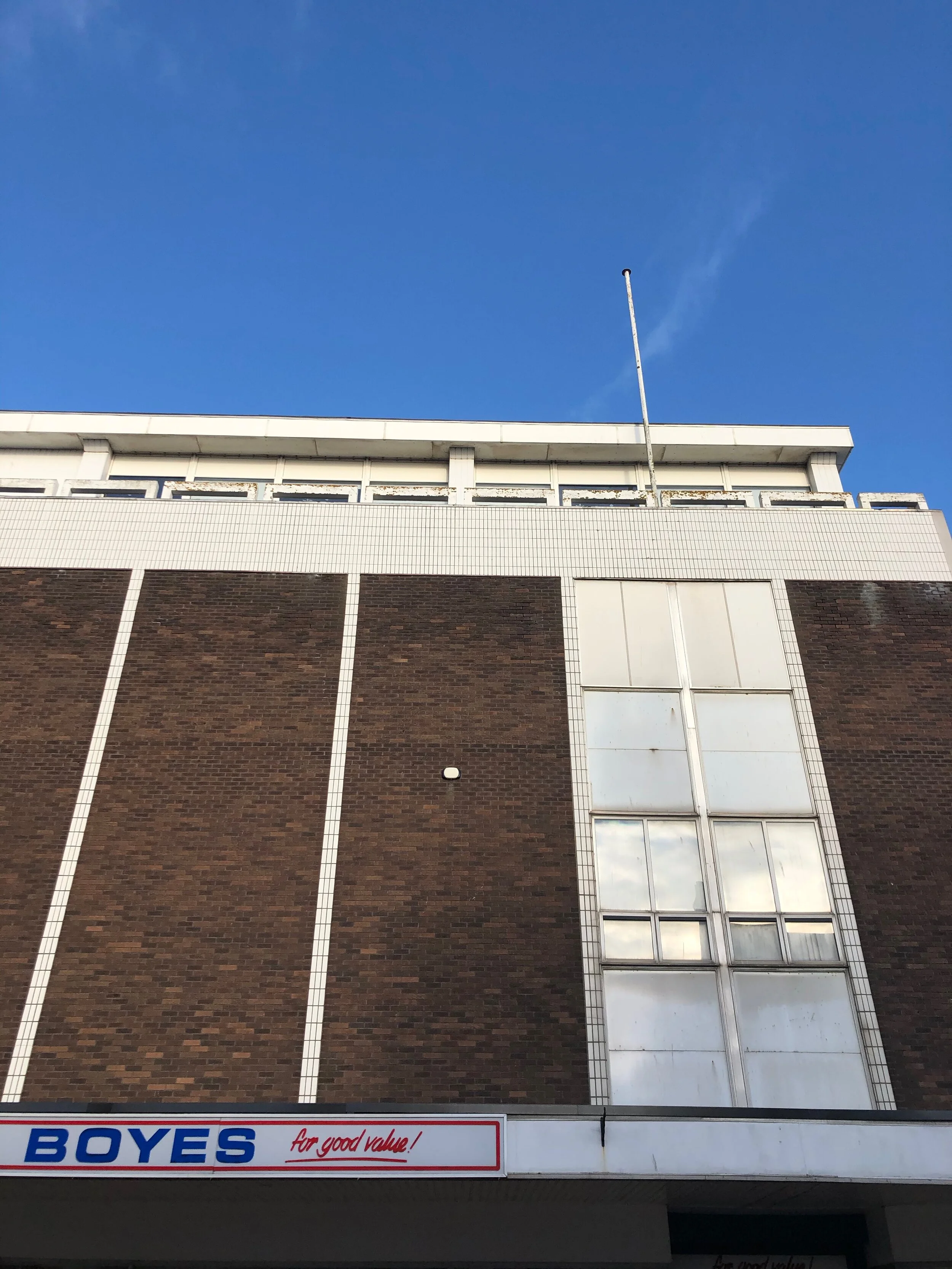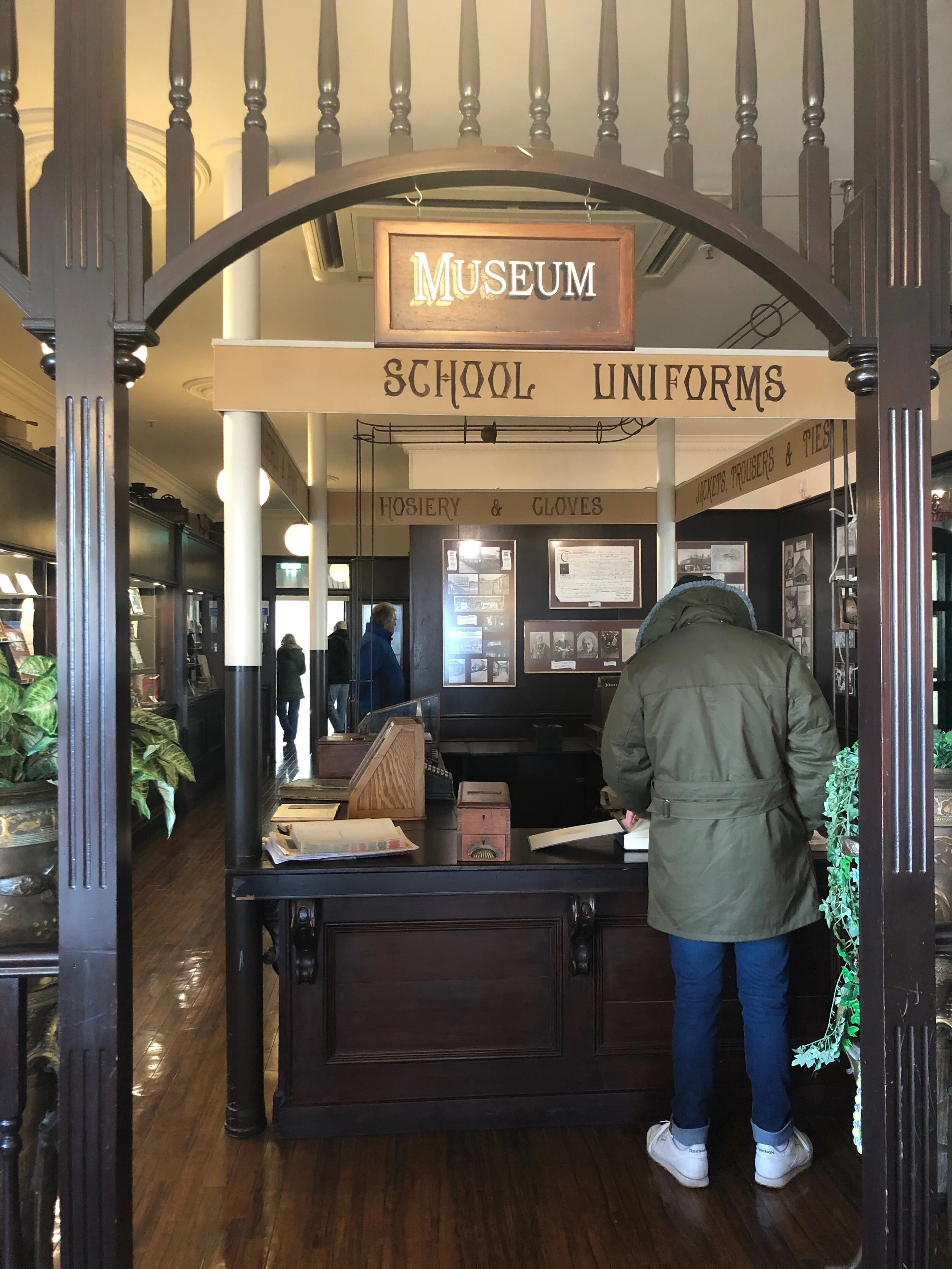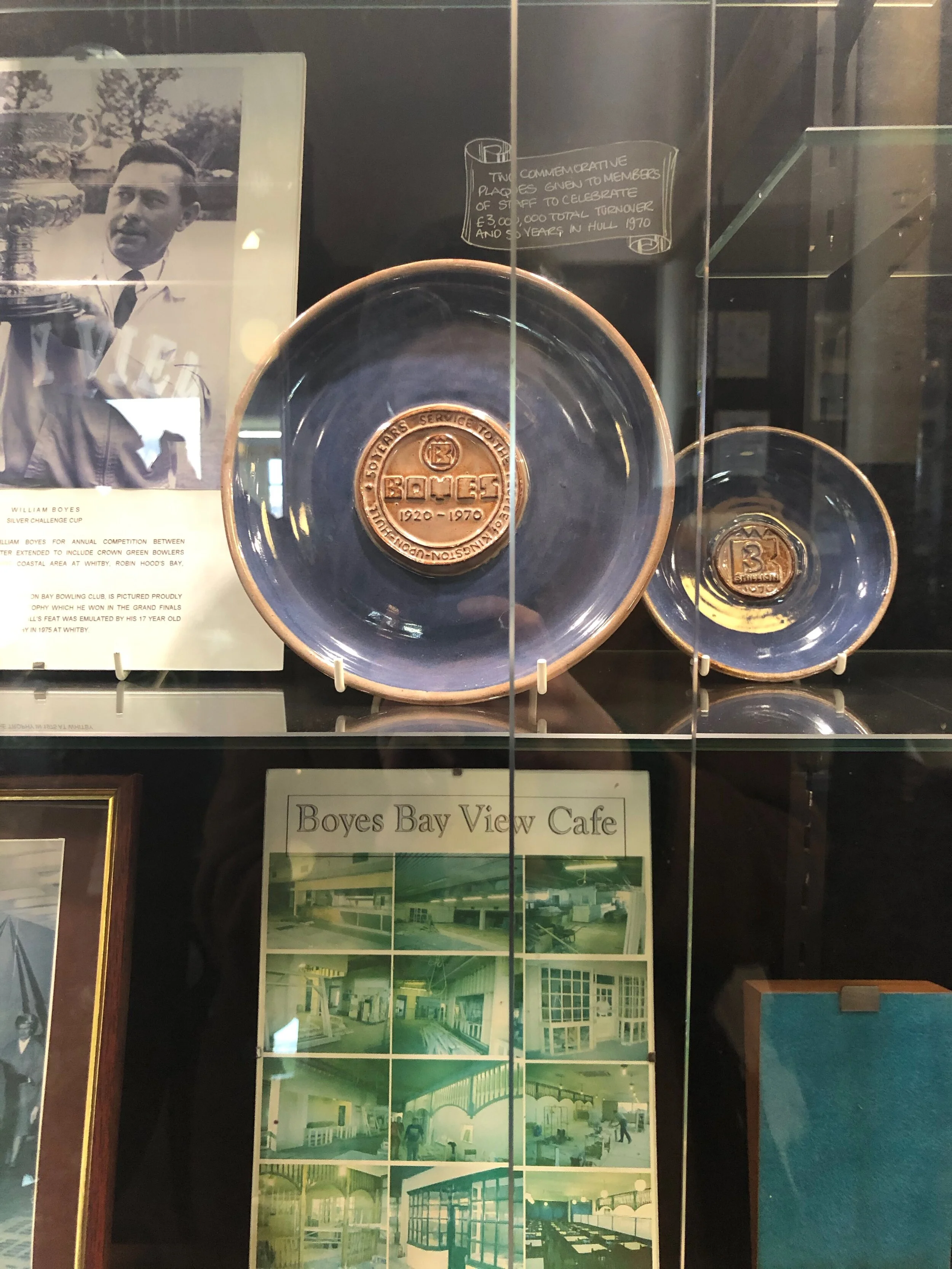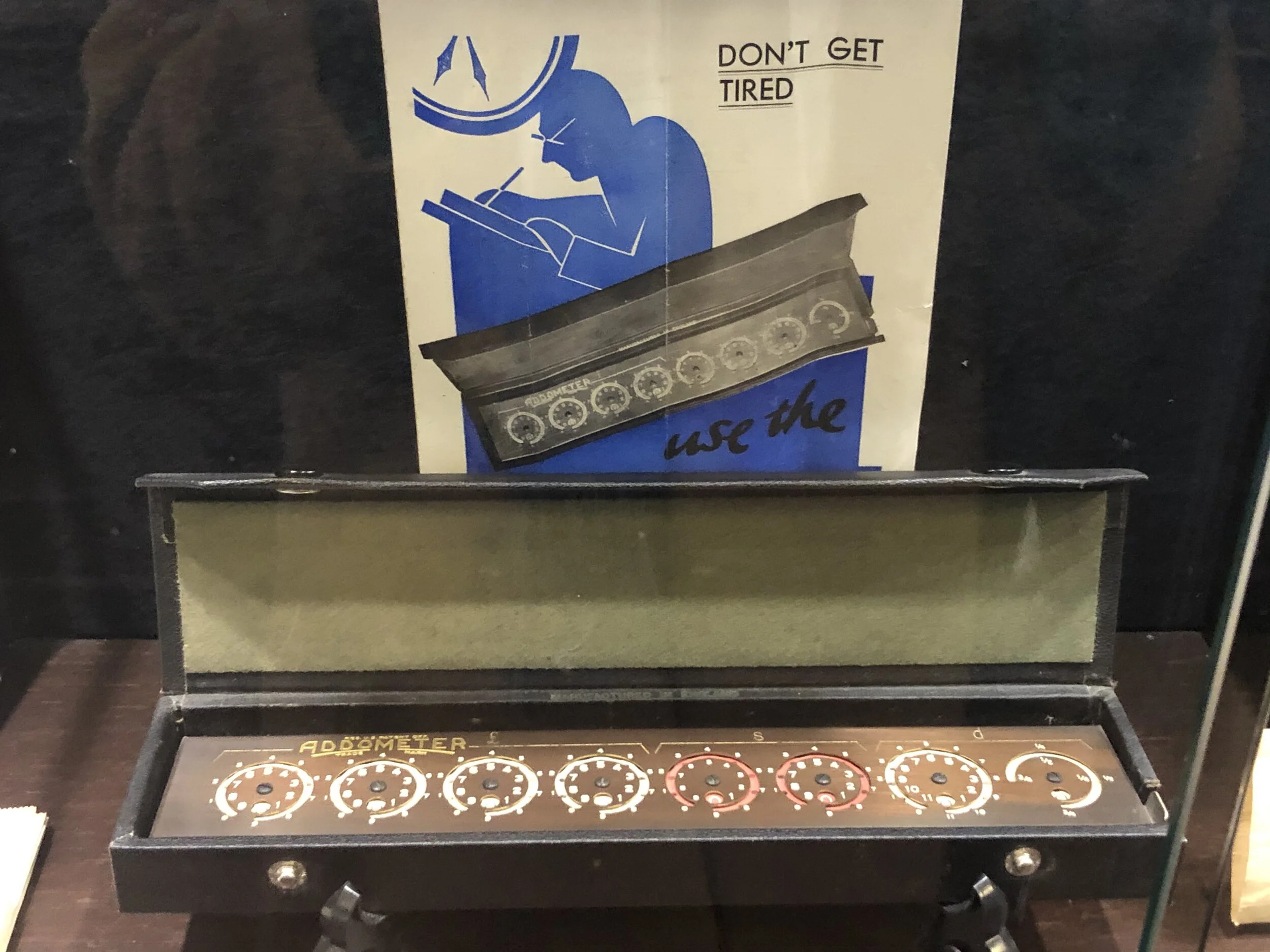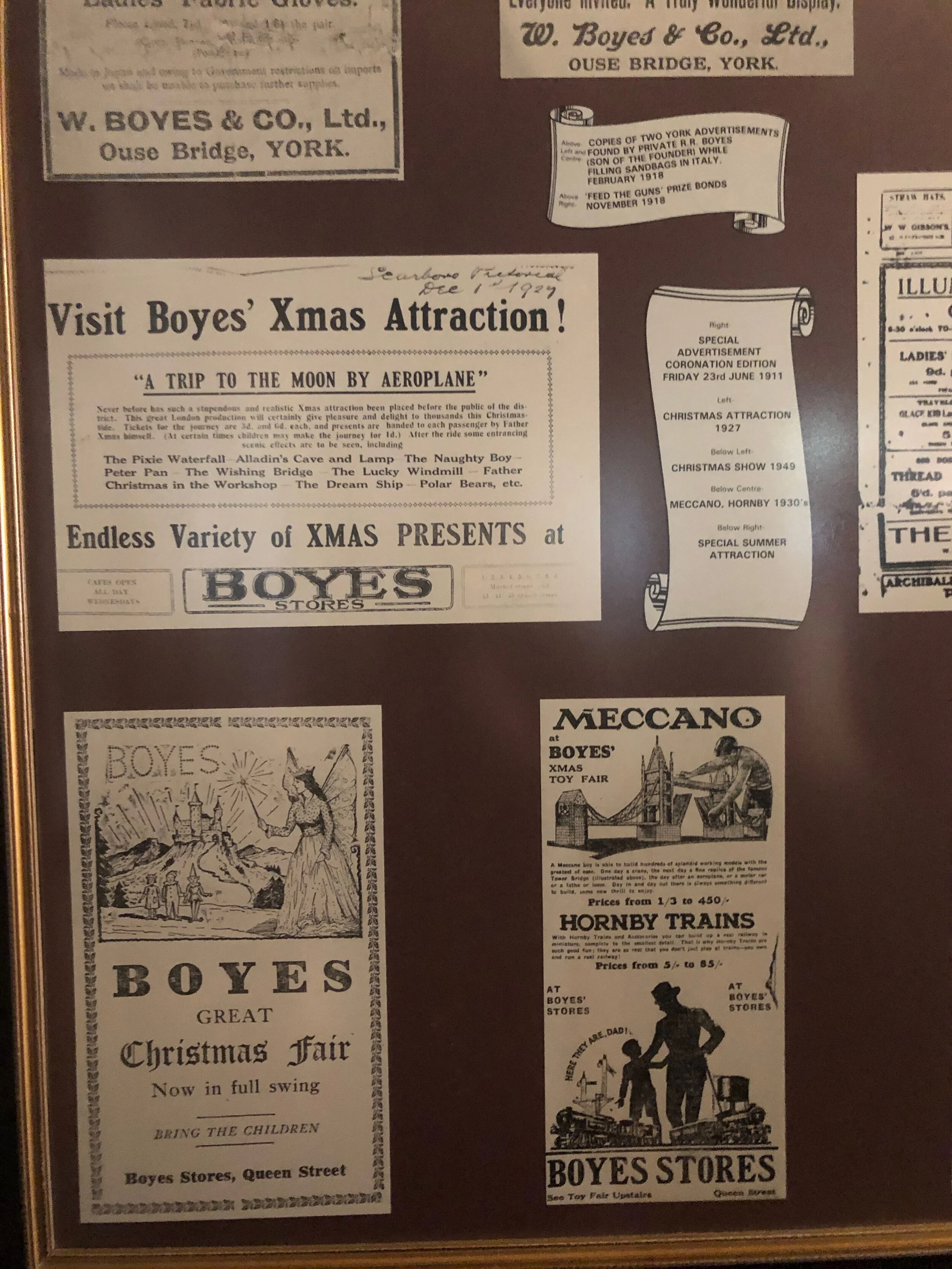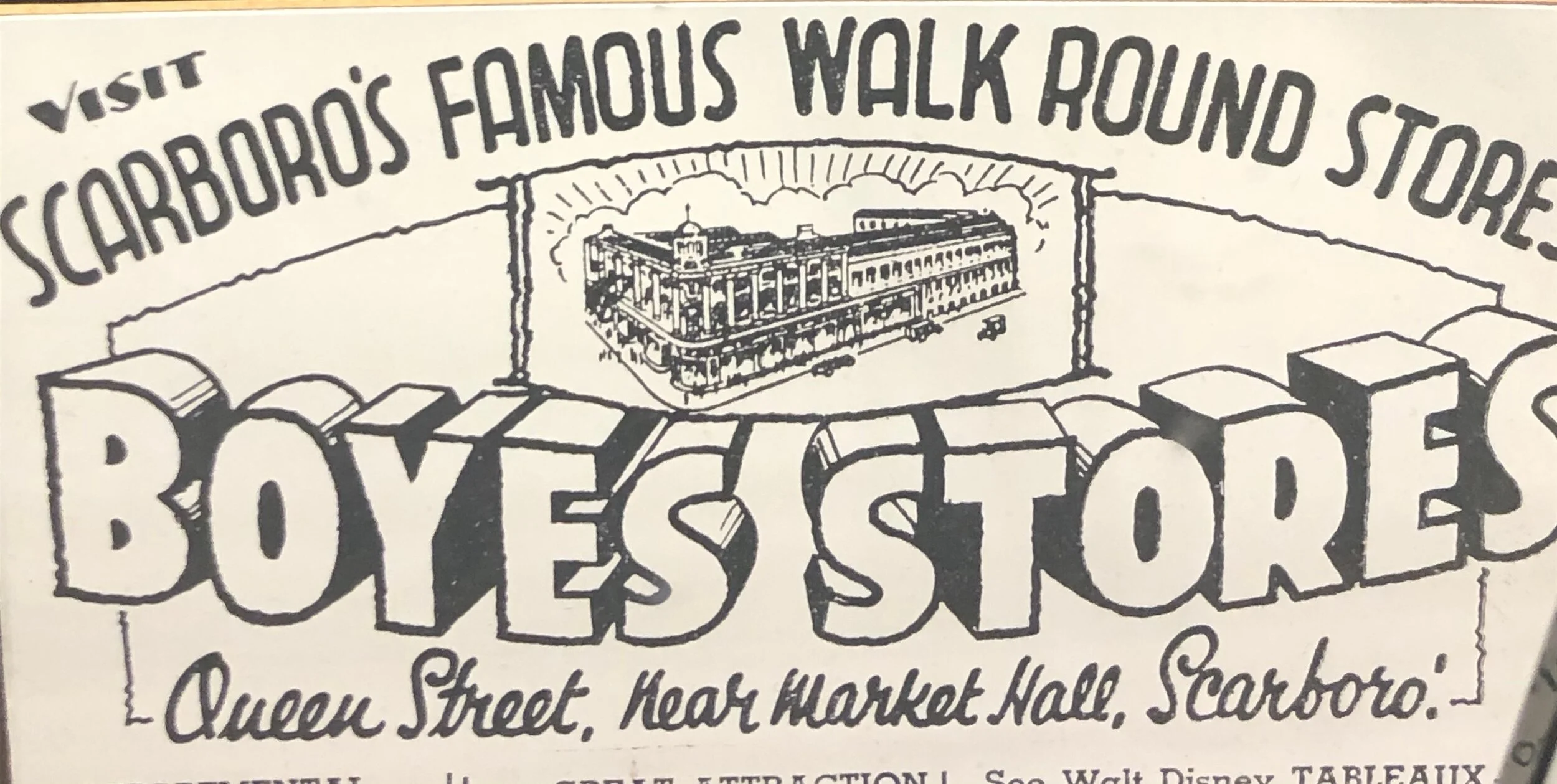Tiny Museums I : Boyes Museum, Bridlington.
If you live anywhere in the north-east of England, or, even if you’ve just been passing through, you’ve probably at least heard of the discount department store chain Boyes. To date, there are sixty-seven branches of the shop up and down the country, with the original store having opened in Scarborough in 1881 and the latest store having being set up in Barton-upon-Humber in September, 2019.
In York, there are two branches of Boyes, one in the town centre and another in the suburb of Acomb. For me, it’s is a magical place – essentially a crazy jumble of things you really, really need for excellent value (I once bought a pair of gloves there which lasted all winter, for just two pounds) and things you didn’t know you really needed, but now really, really want, for excellent value (a waffle-iron which produces heart-shaped waffles? Er, yes please!). Yes, it’s a bit eccentric – the bird seed is kept next to the confectionery - and yes, it can be a bit naff, but if you need a suitcase, thermal undies, fishing equipment or a pressure cooker in a hurry, you know where to go. Plus, there’s a great haberdashery department on the first floor of the central York store, with an old-fashioned draper’s desk (inbuilt tape measure and everything) and more rolls of fabric, lace and ribbon than you could wish for.
Boyes, King Street, Bridlington.
Given my great affection for this weird and wonderful place, you can imagine how excited I was to discover that the Bridlington branch of Boyes not only has a café, but also a Museum detailing the founding and history of the chain. My sweet housemate was intrigued enough to offer to drive us there and so, on a Sunday in early December, we wrapped up warm, collected her boyfriend and road-tripped over the Wolds to Brid.
The interior of the Boyes Museum.
The museum is on the third floor of Boyes in Bridlington and so you have to climb all the way up through the store to get there (which gives it the air of a real pilgrimage and offers your friends the chance to buy a doormat at the same time!) The Bay View Café, also on the third floor gives beautiful views over a long expanse of beach far below (and will do you a chocolate éclair the size of your face – much needed after all those stairs).
The Museum has just two rooms and is part reconstruction of an early twentieth-century store, complete with replica shop front, vintage signs, potted plants and polished wooden railings, and part treasure-trove, the cabinets lining the walls being full of photographs, objects and advertisements from almost every one of the Boyes stores, explained by small hand-written signs. In the second room, there is also an automaton, a life-sized figure of an old- fashioned draper, who sits behind a desk covered with receipts and ledgers, bolts of fabric stacked behind him.
Items in the Boyes Museum.
The story of the founding of Boyes (originally known in Scarborough as the Remnant Warehouse, or the ‘Rem,’ since the original business model sold on the remains of clothing stock from merchants) is told here and there are wonderful photographs of William Boyes, his sons, and the first three co-directors of the firm, all looking patrician and gracious, with quite extraordinary beards. The store, I later found out, is still family run, by the fifth-generation of Boyes-es. William Boyes became the mayor of Scarborough for a while and it seems that the store has always been closely linked with the community – even today, the shop supports Scarborough Cricket Club and at Christmas, Santa upholds tradition by arriving by boat in the harbour and then parading through town to the store, where he takes up residence throughout the festive period.
What I found most fascinating about the museum was that it shone a light onto the changing retail culture and practices of the twentieth century. The objects on show seemed to have been chosen to highlight the way the the business worked and developed over the decades. There are receipts from the early days of the shop, buying permits from the second world-war (coupons given to newlyweds to help them buy products for their first homes), 1970s plastic name badges and wooden cash bowls for passing money between customer and assistant. I particularly loved the ‘Addometer,’ – a strange mechanical calculator. I’d never seen one before and it was strange to me to think that something I didn’t even know had existed had once been a normal part of someone’s working day. I loved these little details of social and retail history. Seeing these objects made it much easier to imagine what the shopping experience would have been like in different periods of the store’s history and how shopping here would have been woven into the fabric of people’s daily lives.
Advertising from various Boyes Stores.
I was also intrigued by the old advertisements and marketing campaigns for attracting customers into the store. Advertising flyers from early decades of the shop’s history boast the number of departments and the amount of serving space, whilst later decades emphasise the good value of the shop (clearance sales and the presence of a cafe seem to be fixtures throughout the shop’s history - proving that tea and bargains have enduring appeal!) Spring fashion shows and elaborate Christmas celebrations seem to have been normal and, if the 1927 Christmas spectacular at the Scarborough store is anything to go by, were the product of much thought and planning; a whole journey to the moon, with special scenic effects sounds quite magical! I like the idea that this sort of in-store entertainment might have been something which occurred in all department stores in earlier decades and not, as today, in high-end shops such as Harrods or Macy’s (although, as noted, Santa does uphold tradition by continuing to visit the Scarborough store). In 1927, the draw was as much the spectacle as the idea that you’d need to buy Christmas presents.
The non-festive attractions are no less fascinating and I particularly liked the links to popular culture - the bill below advertises an in-store Walt Disney tableaux for example. With no television sets at the time, the promise of something you’d seen at the cinema being replicated must have been a draw, particularly for children. There’s also a nice link here between retail and entertainment too - you wonder whether the Disney Tableaux featured items of Disney merchandise which could be bought in store, allowing customers to participate in the entertainment and the shop to capitalise on the popularity of these films. I have no idea if this is too cynical, but it would make a lot of sense! The language of advertising on these bills is also so interesting; ‘Great Christmas Fair,’ the ‘Most Wonderful Store in Scarborough,’ or simply ‘everyone comes to Boyes!’
Promotional marketing materials.
In all, the Boyes Museum is worth a visit – the display of objects, advertisements and photographs all give an insight into ways of shopping and experiencing a store which we’ve mostly moved on from, even though the transaction of buying something in a shop is essentially the same. The museum allows you to imagine past ways of doing business and attracting customers which are very different to the way we interact with retail now. The exhibits have also been presented with a lot of thought, care and affection. I loved poring over the everyday details and marketing bills as much as the photographs of the Queen visiting. In fact, I could have stayed all afternoon, trying to imagine the part this shop would have played in people’s lives during the past century or more. But we were in Bridlington and, before long, it was time to return to the present and do classic winter seaside activities - playing in penny arcades, eating deep-fried mini-doughnuts which burned our mouths and running about on an freezing cold and utterly empty beach, shouting like we were seven years old again.
Bridlington Beach.
